Here is the final article of the great David Farmer Special, an interview we had with him, talking about his work on LOTR. I tried to ask for the stuff you can’t find detailed in other interviews or the BTS of the DVDs, so… Hope you enjoy it!
Designing Sound: When did you start on the films and how what were initial conversations with Peter Jackson and company like?
David Farmer: My first trip over was with Chris Boyes (who recommended me for the project – thanks Chris!), and Phil Benson (Supervisor on PJ’s “The Frighteners”). Both of those guys had met Peter in person before, and Phil had done an entire show with him, so I was a bit nervous. When someone flies you halfway around the world, you feel like there’s a lot on the line. We also took a little detour through Sydney. New Line was apprehensive about doing the sound job in NZ, so they wanted us to look at some alternate mix stages in Sydney. We toured several, and then continued on to NZ to check out Peter’s facility. It was clear to all three of us that Peter’s was where we wanted to do it. To some, it might have appeared we were just kissing up to Peter, but that was just a fringe benefit. We sincerely liked his stage the best, and thought it was where we could deliver the best work.
The first time I met Peter and Barry Osborne, we were visiting his theatre where he was reviewing dailies, and the first thing I see on screen is the ring in the snow from Fellowship. It’s still probably my favorite shot of the trilogy. It’s just a gorgeous shot, and it drove home in one instant what I was getting myself into. This was going to be BIG. We didn’t chat much right then. Peter was going about his day, and we were getting the grand tour too. From there, we went to WETA, and saw a lot of the preliminary work being done in CGI–many of the lighting tests, Gollum skin textures, and animation tests. I was blown away by what WETA was doing, and again, could tell this was going to be BIG. Next, came the tour of WETA Workshop, led by none other than Richard Taylor. He showed us all the armor and props and went into great detail how they had come up with them and all the work that went into them. You know how costumes & props usually look fake & plastic to the naked eye? These things looked amazing even in person. Again – this was going to be BIG. In many ways, that day set the tone for how I would approach my sound process. I had to live up to all that excellent work. I was determined NOT to be the weak link in the chain. It was an incredibly inspiring day, and the inspiration carried me though all 3 shows.
I’m not sure if it was the same day, but Chris, Phil, Mike Hopkins, and I went to Peter’s House where we could chat in a more relaxed fashion. Peter, Fran, and Phillipa were there, and we discussed the films for quite some time. We talked about music & sound effects, and I do remember that I got to mention my favorite “advice” regarding how effects & music can work together. Sound Effects (for events on-screen) don’t have a choice where they can go. They pretty much HAVE to be in sync with the picture. Music can choose to come before or after, but it isn’t necessary for music to hit action – or at least music does have a choice. If both music and effects hit the same moment on screen – neither one will have the intended impact. They’ll just take away from each other. I try to make that point to every director I work with. What they do with it is up to them, but in any case, I’ve said my piece. Aside from that discussion, the most memorable part of the night for me, was the beer. Peter gave us each a bottle of Mac’s Gold – just an off-the-shelf beer, but it has this old-fashioned pop-top. Mike explained to us that you need to pull it off fast, and gave us a little demonstration. However I did it wrong, and beer went spewing all over my lap & Peter’s carpet. So off to the kitchen Peter went, came back with a towel, and cleaned me up. What a first impression I must have made!
DS: Were any passages or descriptions in the Tolkien books used as a reference point or inspiration for any of the sounds?
DF: The Witch King scream in ROTK. I can’t quote it here but it said something about the rising pitch that eventually went out of the range of human hearing. That was a 14 second scream, and it took a lot of tweaking to get the elements to blend together as one & also rise in pitch without sounding fake. To get that sense of “beyond the range of human hearing”, I had to increase the speed of the pitch change quickly right at the end, because a gradual pitch increase wouldn’t have had as much energy and would have had a less dramatic effect.
DS: How did your relationship with Jackson evolve over the course of the three films and what observations about workflow and creative ideas did you make during that time?
DF: Peter was just great to work with. First of all, he let us do our thing, sort of like a concept artist is allowed free reign. Then after he hears what we’ve presented, he would tell us whether that worked or not, and if not, what direction to move in. For a few weeks, I’d make the rounds with Peter when he’d review special effects shots. This was for the cave troll specifically, and I’d get to hear, in clear terms, how he viewed that character. He’d act out the movements himself for the animators, and I got a really good sense of the creature just by watching him. It was also during this that I appreciated his understanding for how things take time. There was one shot where the animator was having a lot of trouble, day after day after day. Peter never got frustrated but instead kept DIRECTING the animator towards what he wanted to see. And this was how he was with us too. He didn’t expect things to be perfect on the first pass, so we felt free to try some unusual things and see if they worked. We were fortunate to also have the time for those experiments. These days, that’s a very rare thing.
My sense was that, on FOTR, everyone was a little on-edge, and even in a good way. No film had been released yet. No one knew how it would turn out in the end, or if all the pieces of the puzzle would fit together. But once FOTR was released and we could look back on it, there was some relief that the milestone had been reached. We solved a lot of the major sound issues on the first film. We could re-use a certain amount of sounds in the other two, but the major accomplishment was just that we had solved the problems. That gave us and the filmmakers confidence that we could do it again on the next two.
DS: I know the amount of recording needed for these films was huge! What kind of usual and unusual sounds did you record for the films? Did all of the recording session happen in New Zealand, was there anything you needed to recorded off island?
DF: My NZ schedule was typically about 1 month there in the early part of the year, then back to the US for the summer, and back to NZ for 3-4 months to finish. During that early trip, we’d do an entire pass on the film. Of course, we were missing vast amounts of Visual Effects, and the picture edit would also change pretty drastically from that stage to the end result. But, it was great to do a full edit so early, because we could identify what we were missing, with enough time to solve the problems. My summers were largely spent doing recording sessions here in the US. I usually didn’t get many picture updates during the summer, because there weren’t many. Peter was doing the same thing we were in a sense. He was doing reshoots to complete the film to his vision.
We did do a lot of recording in NZ, and the people there were just great. They were really happy to support the films & participate. So the answer is, both NZ & in the US.
DS: In the extra content of the DVDs you recorded your own voice for some creature sounds. How did you decide what creature vocals you’d perform with orally and what to design from recordings?
DF: The most vocal FX I added went into the wraith screams. Once I found that flavor that Peter liked, that center piece, we were able to do a few more like it using Fran’s screams. But those alone weren’t quite screechy enough. I already had a lot of inhale screams I’d done myself, so I started pitching those up and adding to Fran’s screams, and that worked a lot better. Over the course of the trilogy, in order to make more & different wraith screams, it was pretty simple since I could record as much of myself as I needed. I could only do it in short bursts though. Those inhale screams made me lightheaded after a couple of minutes and I’d have to lie down. I was really putting a lot of effort into it. I wish I’d recorded some video of those.
The warg “howls”, were a combination of me & a real pack of dogs I had in my library. That was a case of a bit more desperation, since it was too late to locate a pack of howling dogs.
DS: You also talked about the challenges of creating sound for the Orcs, being a more humanoid monster. Could you tell us how was your approaches doing orcs and all the humanoid creatures?
DF: Fortunately, very few of the orcs spoke, and we were given license to depart from those speaking voices for any efforts. The first image I ever saw of an orc was one of the Moria orcs, and I knew in that instant that I wanted to base (at least that type of orc) out of some type of seal. I didn’t want the typical Sea Lion vocal that everyone recognizes. I knew seals made vocalizations that would be believable as human-rib-cage sized sounds. One day my wife and I happened to be at the Marine Mammal Center in the Marin headlands, and it was the time of year they had lots of baby elephant seals there, and a few of them were very vocal. I’d never heard that sound before and knew that would be perfect for the Moria Orcs. The Moria Orcs were the smallest of the orcs, and Peter’s direction for them was “sort of cockroachy”. So we recorded ourselves scrambling around wearing cleats for the movement. But the major signature sound for them was the elephant seal pups. It had a nice projecting call too that we could verb for the distant ones. The scene in the mines of Moria at the “Drums in the deep” are all elephant seals distanced, and the party of heroes hears and identifies them quite clearly.
The Uruks were much larger and more savage, and needed to have a different voice than the Moria orcs. They were based largely on sea lions, especially for the pain reactions, with tigers and leopards for the more aggressive attacks. We also recorded ourselves a few times, most all of the sound team, and we peppered in those vocalizations to add variety and a more human reaction. Most of the wetter, slobbery type stuff is human (us). Most of the character comes from animal elements, but the human stuff helps stitch it together as humanoid. It really needed to be a combination of animal and human to pull it off. I should add that we typically didn’t layer human over animal for the same sound, they played sequentially to keep the variety up.
DS: You also recorded unusual things for creatures such as utilizing rock sounds for The Balrog’s growls. Could you give us other examples of atypical props or materials used for creature vocals?
DF: The Balrog rock was fun in a couple of ways. First, it did match the creature quite well, but it was also a chance to expand on an idea I’d had several years before. There was a rock gargoyle in another film, where I tried the same thing. It was only on screen for a few seconds so I never got to really explore it fully. But the Balrog had a lot more moments. I think my favorite moments are the very first ones when he’s sort of waking up in the distance. I was really happy with how that turned out. The rock grinds were all by themselves in several places as vocals, but there were also moments where it really needed a vocal bellow. I used donkeys and horses for the bellows and also any pain vocals.
Another idea began with another creature in an earlier film, and I was using some harbor seal sounds for that. I didn’t have enough source sounds to do it right, but I took it as far as I could. Michael Kamper was working with me on that show. I thought the harbor seal was a very strange sound (but thought it fit that critter really well). So I pulled Mike in and played the scene. I asked him what he thought that sound I was using sounded like. I was mainly trying to find out if it was identifiable. But what he said was “it sounds like a plastic cup scraping”. So I went to Target, bought a bunch of plastic cups & bowls, and then Harry Cohen and I did a record session in the foley room. So I finished that creature using nothing but the plastic cup scrapes. I used them in the Wraith screams quite a bit. They added a really nice, dry, aggressive raspiness that really finished off the sound. I still use those cup scrapes today.
One more odd thing, was this plastic alien head filled with liquid I got at Spencer’s gifts I think. When you’d squeeze it, it had this crazy wet screech. I’d actually recorded it years before Rings. and had always been looking for a place to use it, but nothing fit. Along came Shelob, so I recorded a lot more of it. My first couple of attempts at Shelob used nothing but that Alien head as source. I really quite liked it, and it sounded like nothing I’d ever heard before. I had a little contest going with the sound crew to see if they could tell what I used. Mostly I was just trying to see if I had pulled it off – if it sounded like a living thing or a prop. Everyone thought it was a real creature, and that it was PISSED! Ultimately though theres not much of it left in Shelob in the final product though. Peter wanted it to sound more alligator hissy instead. I miss the character that alien head added, but to be fair it was pretty high-pitched without anything near lows. I was trying to do a creature that had no low end since almost all the others had a lot, but it didn’t give us the threat I’d hoped it would.
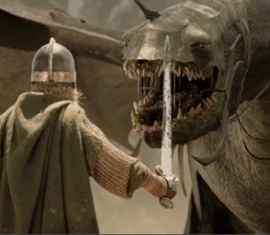
DS: How did you established an order or specific palette of sounds for each race of creatures? How extensive did the library of vocal sounds (breath, screams, different vocalizations, etc) have to be to accommodate the amount of beasties in the films?
DF: I think one of the things that was best, was there was no specific library created, as in composite sounds. I began the films trying to create composites, to create a library of sounds for other people to use, but I work much better when I edit my own design to picture. Towards the end of the trilogy there were more composite files of things, like the wraiths & trolls. But for the most part, I made my way through each scene, creating each event from elements as I went, even as late as ROTK with the Mumakil attack. The added benefit was more variety and less repetition. I made each of those Mumakil vocals from scratch, direct to picture. That’s not to say I didn’t re-use some elements, but they were never put together the same way twice, which really helps sell the scene IMO.
DS: How did you guys approach the use of worldizing and or impulse response recording for the films?
DF: We did a lot more worldizing on FOTR. I started playing with Altiverb right after that, and by the time we got around to “Two Towers” I had shifted my approach to gathering impulse responses, where normally we would have worldized before. Making the IR’s wasn’t a given, in that there was no sure-fire method for getting great ones. So we still did some worldizing when we felt we needed to, but it wasn’t as often.
DS: There are a lot of battles and creature sounds that sound big. What’s your theory on designing big and powerful sounds?
DF: I think it boils down to basics really. I’m not really about the size as much as the energy. And it has to start with an energetic source sound. This would have been a good topic in the “Perception of Sound” article. High energy can convey a large size, at least to some degree. One mistake I see a lot, and one that I’ve MADE a lot, is to try to coerce size from a sound that has no energy. Overcompressing, adding low end–these are all attempts to add energy and size to a sound. That works to some degree, but can’t work miracles. I also don’t typically pitch or slow down a sound very far, because that lowers the energy tremendously. Quite often I’ll take a sound that’s too large for the event and pitch it up, which increases energy.
DS: What was the dynamic like on the dub stage? How much time did Jackson spend there with you and the mix team?
DF: It was a pretty homey vibe on the stage. Peter is pretty much just like what you see in interviews with him. He’s very expressive, and has a great way of giving notes so you know what he wants. He also lets you do your thing first and understands there’s a method to getting things done, that what he’s hearing at any given moment can be just a “means to an end”. As the trilogy progressed, both Peter & I were on the stage less & less. Things were coming in later & later, and he was working on the many other stages of the picture, and I was frantically addressing new things, or fixes and other adds.
DS: Finally, do you have a favorite scene? What is your favorite of the three films and why?
DF: Jeez!!!! No I can’t pick one. But some standouts are:
- The Balrog waking up in the distance and sending the orcs scrambling. This critter was one of the most memorable from the books to me, so it was scary and also gratifying to give him a voice.
- The cave troll fight in Balin’s tomb (FOTR) – it was just very satisfying to build that creature from distant calls, to close up fighting, to wearing down and getting tired, to a pitiable death.
- Anything that had the fell beasts. I was really happy with the sounds of the wings and their flying sounds, as well as their vocals.

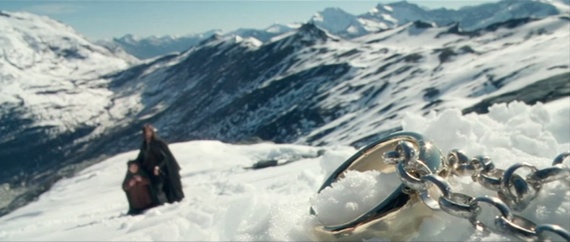
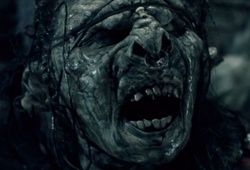
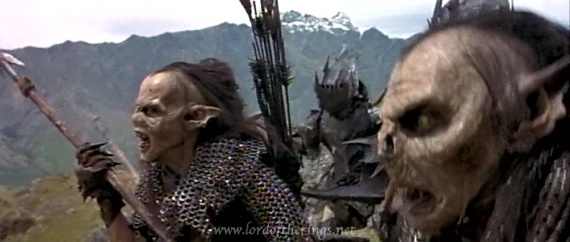
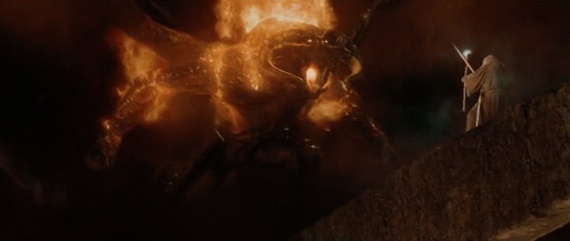
Cup scrape!! I was so impressed with that sound. I did a film with many sustained beast cries and wish I’d thought of that. It was difficult to sustain a roar for five seconds but you did a terrific job there of course. Thanks for the interview.
Wow! Great questions and great answers. Thanks Miguel.
Thanks David for sharing with us all month. I’ve taken alot of great insight to take away from these articles.
Lord of the Rings DVD extras is the reason I am a Sound Designer today. Thanks Miguel and David – I owe lots to you guys.
Thank you, both of you. This way of approaching to sound makes this site a gold place to look every day. Thanks for sharing David, I wish you’ll have another special month again. Miguel thanks, your work is much, much appreciated.(sorry my English)
Fantastic interview. Thanks to David and DS.